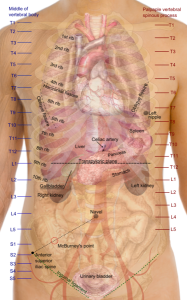Bladder Injury (Trauma) Causes, Symptoms, Diagnosis, Treatment
Trauma to the urinary bladder is not considered as one of the common injuries in events like a motor vehicle collision but it may occur more often than you think. In fact as many as 6 out of 10 bladder trauma cases are due to motor vehicle accidents, and it is very likely to arise when the pelvic girdle is fractured in a collision. However, there are other possible causes which may not be as common – approximately 14% occur during medical or surgical procedures, about 3% occurs with alcoholism and less than 1% occur on its own sometimes for no clearly identifiable reason.
Meaning of Bladder Trauma
Bladder trauma simply means injury to the bladder. We often hear of bladder diseases like infections (cystitis), bladder stones, overactive and neurogenic bladder and so on. However, trauma arises usually with some mechanical force. It most often happens with blunt force trauma but it can also occur with surgery and certain medical procedures. Whatever the cause, the bladder has been injured to some degree and in severe cases the bladder can even rupture.
A full bladder is more likely to be injured under these conditions than an empty bladder, as it distends and shrinks accordingly. Although a full bladder is said to contain between 400 to 600mL of urine, it can stretch even further if necessary. In the past bladder injuries often led to death but modern medicine has drastically reduced life-threatening complications. Sometimes the injury can heal on its own with minimal intervention while at other times bladder trauma may require immediate surgery.
The position of the bladder and proximity to other organs in males and females may play a part in the likelihood of bladder trauma. Read more on bladder anatomy and location.
Causes of Bladder Injury
The causes of bladder injury can be broadly divided into blunt and penetrating trauma, iatrogenic and idiopathic. Although in most cases the causative event can be identified and bladder trauma occurs then, sometimes an even can only weaken the bladder without causing significant injury. However, the risk of bladder trauma is now greater.
Blunt and Penetrating Trauma
This cause is largely self-explanatory. A blow to the pelvis or lower abdomen may occur with a motor vehicle accident, punch or kick and even a sporting injury like during tackles or when a heavy and fast moving ball may strike the area. Trauma is more likely to occur if the blunt force trauma occurs at a time when the bladder was distended from being full of urine.
Bladder trauma with very minimal impact like a stumble or fall is more likely to occur if there is pre-existing bladder disease or weakened on the bladder as discussed below under idiopathic causes.
Penetrating trauma may occur with intentional acts like a knife or gunshot wound. It can also occur as an accidentally when a person is impaled with a sharp object. The trauma to the bladder as a result of a penetrating injury is not as dependent on bladder distension as it is with blunt force trauma.
Iatrogenic
The term iatrogenic means that it was caused by some medical treatment or surgical procedure. Bladder injury may occur due to a number of different iatrogenic causes. It does not always have to be with a bladder-related investigation or surgery. Some of the iatrogenic causes include:
- Prolonged labor or forceps delivery
- Cesarean section (C-section) delivery
- Hysterectomy (vaginal or abdominal)
- Transurethral resection of the prostate (TURP)
- Bladder biopsy and surgical procedures
- Orthopedic procedures relating to the pelvic girdle
Idiopathic
Idiopathic causes means that the condition occurs for no known reason or no clearly identifiable cause. It may arise with unknown risk factors. A weakened bladder wall can eventually lead to a rupture even with minimal impact. It has also been noted in alcoholism. Furthermore people who repeatedly drink large amounts of fluid may also experience bladder injury although there is usually some underlying risk factor for this to occur.
Signs and Symptoms
Most of the signs and symptoms of bladder injury are non-specific. This means that the signs and symptoms do not conclusively point to bladder trauma. In fact some of the symptoms are more likely to be seen with common bladder problems like an infection (cystitis). The symptoms present with bladder trauma include pain (suprapubic pain/tenderness sometimes described as lower abdominal pain/tenderness) and difficult urinating. Sometimes a person is completely unable to pass urine.
However, it is important to note that in some cases of bladder injury a person can urinate in a relatively normal manner but even in these instances there will be some pain and tenderness. Blood in the urine (hematuria) is another common symptom. It may not be microscopic but when there is a rupture of the bladder wall then the there is usually gross hematuria. Microscopic hematuria has to be detected with laboratory tests but in gross hematuria the presence of blood in the urine is visible to the naked eyes.
Diagnosis and Treatment
Tests and Scans
Blood tests like a serum creatinine aid in the diagnosis of bladder trauma but it is not a conclusive indicator. Instead imaging studies like a CT scan, cystogram or CT cystogram may be necessary to allow for visualization of the bladder injury or rupture. Surgical exploration may be done to conclusive identify a bladder injury and it may be necessary to treat the problem during this procedure. A biopsy may be taken and the sample sent for further laboratory investigation.
Treatment of Bladder Trauma
The treatment for bladder trauma largely depends on the severity of the condition, type of injury and to some extent on the cause of the trauma. Sometimes no specific treatment is required apart from adequate drainage of the bladder through catherization. This prevents the bladder from distending and allows it to heal on its own. Catheterization may be necessary for 1 to 2 weeks until the bladder heals sufficiently but sometimes surgery is unavoidable. Modern medical and surgical advances means that the condition can be effectively treated if diagnosed early. If left untreated or poorly managed it can lead to urinary tract and intra-abdominal infections among other complications.
References:





